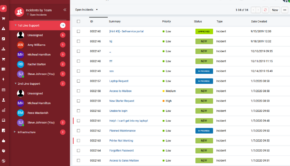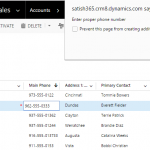How to Reduce Customer Queries
When you run a business, whether you provide a service or goods to people, there will always be customers who have questions. This is something you will have to deal with no matter the type of business you run. Of course, it is only natural for customers to have questions, and complaints will occur.
As a business owner, your time is valuable, and there is a lot more you need to succeed than answering questions from customers. However, depending on the type of business you run, you could face hundreds or thousands of queries per day.

It’s a time-consuming thing to deal with. The result is often lackluster customer service due to an inability to deal with so many queries. You could end up hiring customer service reps, which costs money.
Besides using a data collection and customer feedback system such as Responsely to improve your customer service, there are a few things that you can do to reduce customer queries.
Offer Customers Both Product and Service Reviews
Questions about a specific service or product can often be answered by other customers who have already made a purchase. Providing customers with product review pages where people can leave reviews for others to see is one way to limit the number of questions that come your way.
You can create a question-and-answer system like the one Amazon employs, allowing people to ask questions and other people to answer them (whether other customers or the retailers). In a sense, this is a type of self-service. You are getting existing or previous customers to take some of the burden off of you.
Provide Detailed FAQ Pages
One of the best things you can do to limit customer queries answer as many questions as possible before they’re asked. No matter what kind of business you run, you should always have useful FAQ pages.
FAQ stands for frequently asked questions. You can provide FAQ pages for payment and shipping methods, FAQ pages that concern the services you provide, and you can even go so far as to provide customers with an FAQ page for every single product that you sell.
It doesn’t take long to put together a decent FAQ page, and it can help reduce customer queries. Customers won’t have many more questions if all of the main ones have already been answered.
Make Phone Calls Instead of Sending Emails
Have you ever noticed how texting and emailing can take a long time? There is a lot of back, and forth that can go on. People forget to ask half of what they wanted to ask in the first place, thus resulting in another email. It’s a proven fact that solving customer complaints and queries via phone call is much faster and more efficient.
It takes less time to deal with people directly over the phone because it’s a genuine two-way conversation that both people can actively engage in real-time. It avoids that back and forth of several emails. It might not stop one communication from happening, but it can help prevent subsequent communications.
Being Proactive Helps
Another good tip is to be as proactive as possible. For instance, if you are selling a particular product online, there is always a chance that a customer will want to return it or get a refund. This means that if a customer wants to do so, they will need to contact you to ask about return and refund policies.
Instead of waiting for the inevitable phone call or email, be proactive provide that information to the customers beforehand. You can do this via email, or you can just set up a returns and refunds page on your site that contains the relevant info. This not only applies to refunds and returns but to anything that might lead a customer to contact you.
If a customer has already contacted you once, and the issue is taking a while to resolve, send the customer follow-ups and updates. This can be an automated email with general information that follows a set template. This will keep the customer satisfied for the time being and help avoid that inevitable “What’s Going On?!?” email.
Conclusion
There are many methods you can use to reduce the number of customer communications that come your way. At the end of the day, time is money, so it helps save resources on multiple fronts.
















